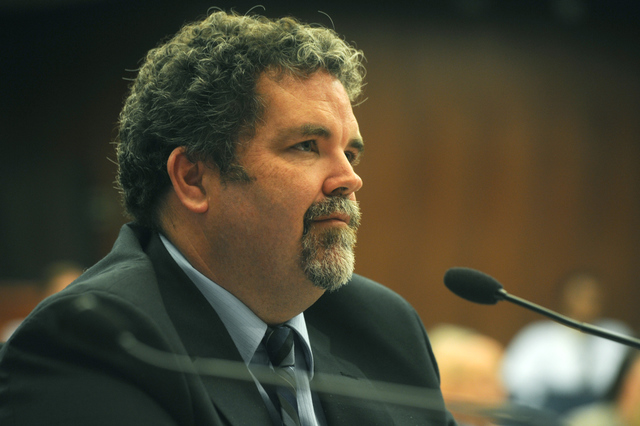Way More Heat than Light on 101
Freeway Widening Confab Generates Frustration, Clarifies Nothing

If Friday’s closed-door summit between Caltrans and Common Sense 101 was supposed to clarify the extent to which Montecito’s left-hand freeway off-ramps do or do not contribute to traffic collisions, it was an utter failure. Two of the three elected officials who attended the meeting — Santa Barbara Mayor Helene Schneider and 1st District County Supervisor Salud Carbajal — expressed varying degrees of exasperation, disappointment, and frustration with the lack of communication that took place. Certainly, both said, the meeting did not proceed as they had thought it would.
Given that Caltrans is currently poised to certify the environmental document for the $500 million freeway widening and HOV lane project from Montecito to the Ventura County line, the frustration over how the meeting went could have major ramifications over how — or if — that project proceeds. Carbajal upbraided the posse of Caltrans representatives, telling them that their performance could undermine support among some board members of the Santa Barbara County Association of Governments, the super-government agency on which he and Schneider both sit.
The meeting was held to help resolve a longstanding factual — and political — dispute over the safety of the current left-hand off-ramps in Montecito. Caltrans has insisted that left-hand ramps are inherently less safe because they defy driver expectations and that the number of collisions by the Cabrillo off-ramp in particular is significantly higher than the statewide average. Commonsense 101, a group of politically connected Montecito activists, has insisted that the left-hand ramps are no more dangerous and that the freeway widening could be completed faster and far more cheaply if they were retained.
This summer they met with Caltrans chief Malcolm Dougherty, the head of the State Transportation Agency Brian Kelly, and a representative from Governor Jerry Brown’s office. (Dougherty had vowed earlier in May that he would never consider keeping the left-hand ramps.) Mayor Schneider was at that meeting and all but threatened to withhold issuing the local coastal development permits needed for the project to proceed unless a host of issues — including the left-hand off-ramps — were addressed first. Based on that, Dougherty was instructed to have local district director Tim Gubbins meet with Commonsense 101 activists to come to some agreement as to what the actual facts were regarding the collision and safety issues relating to the Montecito ramps.
Before the meeting, Caltrans had shared a data dump with Commonsense 101, providing detailed accident reports on 17 collisions that had taken place in the area in recent years. Commonsense 101 hired its own traffic engineer to comb through the accident data and concluded that there were absolutely no accidents at all by the Sheffield off-ramp, that there were no northbound accidents by Cabrillo, and that many of the accidents that took place by southbound drivers had nothing to do with the fact that the off-ramp was on the left side of the road rather than the right.
According to Schneider, Carbajal, and Santa Barbara’s Community Development Director Paul Casey — who also attended the meeting — Gubbins showed up with a large team of Caltrans employees, but none of them were prepared to address the specifics of what the Common Sense 101 team had found. They were there, they said, only to listen. Schneider objected that this was not what had been agreed to at the meeting she’d had with Dougherty in Sacramento this summer. Carbajal was more emphatic, expressing serious concern that Caltrans had approached the exchange as a “perfunctory, check off the box” gesture.
That was bad enough, but it reportedly got much worse when a Caltrans engineer stated that the 17 collision reports were not the only basis for Caltrans’s conclusion that the Montecito off-ramps were unsafe. They had other information, he said. This infuriated the representatives of Common Sense 101, who demanded why they hadn’t been given that information as well. Prior to the meeting, they’d sought any and all info relating to the safety profile of these intersections.
The $500 million question is, of course, what’s next? If Gubbins proceeds in the next few weeks to certify the environmental report — as rumors indicate he might — will the City of Santa Barbara file a lawsuit to challenge the adequacy of the report? “That’s a serious possibility,” said Schneider. “That’s something we’ll have to give serious thought to.” That, in turn, would further delay the freeway-widening project. It could be that Caltrans has assumed all along that its environmental report would be challenged — if not by City Hall, then by Common Sense 101. If so, the reasoning holds, why waste time trying to appease critics by making concessions that won’t prevent the challenge anyway?
One of the more curious details of the meeting was the presence of Santa Barbara City Councilmember Dale Francisco. Francisco, a socially conservative Republican with serious preservationist chops, said nothing while there, but he’s just formed a committee to explore running for Congress in 2014. Common Sense 101 activists had not been shy about spending money in the recent City Council race and generously backed Lesley Wiscomb, who was strongly backed by Francisco. Wiscomb lost. The campaign consultant hired by Common Sense 101 is Jeremy Lindaman, who has been a longtime advisor to Schneider and to Councilmember Bendy White. Also extremely interested in running for Congress is Salud Carbajal — a Democrat — though not as long as incumbent Lois Capps is running.
Tim Gubbins of Caltrans was not available for comment by deadline; hence the Caltrans perspective on how the meeting transpired is utterly absent from this post.


